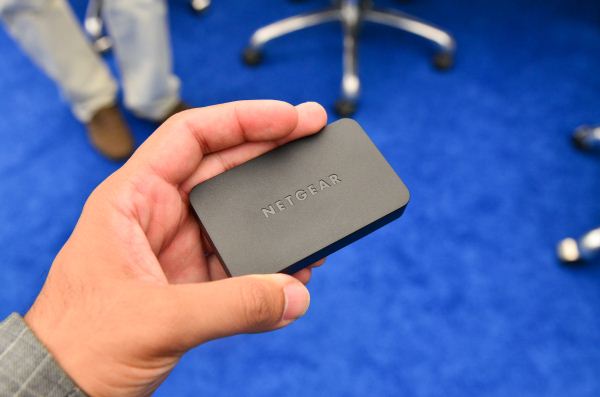Intel's WiDi 3.5: Much Faster, USB, Miracast Support and New Receivers
by Anand Lal Shimpi on September 19, 2012 3:00 AM ESTTwo years ago Intel introduced its wireless display technology (Intel WiDi) that uses the host CPU to encode a stream of whatever is on your screen and send it wirelessly to a receiver connected to a TV or other display. As a recap, to support WiDi you need a supported hardware platform (Arrandale/Clarkdale, Sandy Bridge or Ivy Bridge) and an Intel wireless adapter. On the receiving end you'll need a WiDi receiver of course.
The initial version of Intel's WiDi was limited in resolution (720p only), features (no HDCP support) and performance (very high latency). Since then Intel has been regularly updating the WiDi software stack to add new features and improve performance.
Today Intel is announcing version 3.5 of its WiDi software with some significant feature and performance boosts. On the feature side there's now support for streaming USB wirelessly as well as display. The receiver has to feature USB ports, but with that in place you'll be able to get wireless access to USB HID devices such as keyboards, mice, game pads, etc...
Also on the feature side, Intel is announcing full support for the WiFi Alliance's Miracast specification. Although not all features and performance claims will apply with a Miracast receiver, you should be able to get wireless display functionality from a WiDi enabled system to a Miracast receiver.
Windows 8 and touch are both supported with this latest software update.
On the performance side Intel is promising 60ms latency for WiDi 3.5 when used with an Ivy Bridge based system (250ms with Sandy Bridge) and a 2nd generation (or newer) WiDi receiver. Later this year we'll see an updated Netgear Push2TV WiDi receiver that's a lot smaller with a starting price of $59.99.
Intel's WiDi 3.5 software will be available in October and is sampling to OEMs now.















15 Comments
View All Comments
tuxRoller - Wednesday, September 19, 2012 - link
Its really not clear why it doesnt. If nothing else, grab the framebuffer and send that over the air.SilentSin - Wednesday, September 19, 2012 - link
Considering they don't even support other vendors video cards I seriously doubt this. I've really wanted to try this tech out at the office but there are way too many compatibility issues to be able to support everyone's PC. You have to have 4 levels of compliance for it to work: http://www.intel.com/support/wireless/wtech/iwd/sb...tuxRoller - Wednesday, September 19, 2012 - link
I was actually thinking about using this with intel graphics, though, as long as DMA-BUF is employed, there is a standardized way to share buffers whatever the card, though I'm not sure what kind of device widi/miracast would appear as.Also, what do you mean "they don't support other vendors video cards"?
SilentSin - Thursday, September 20, 2012 - link
I mean that literally. I have a Clarkdale laptop where the OEM has disabled the IGP through the BIOS (non-configurable), it uses a nvidia Quadro 3100M. Because of that the WiDi install fails stating I have an unsupported platform even tho I meet every other requirement. I find that to be pretty ridiculous because as you say you should be able to access the buffer no matter what video card is being used. I'd be curious to see if this works on an Optimus enabled laptop. Hell why even require an Intel wireless card? All of the Intel-only requirements are fishy imo.tuxRoller - Thursday, September 20, 2012 - link
Although that sucks, that isn't Intel's fault. However, as you say, the requirements are Intel's fault.Here's to hoping miracast is a better solution.
Daller - Wednesday, September 19, 2012 - link
I'd like to be able to hide my computer in the cellar and stream everything into my living room using my LAN. HDMI over CAT6 is too cumbersome.martyrant - Wednesday, September 19, 2012 - link
I think if you want to use your LAN you are doing things wrong by trying to do HDMI over CAT6 in the first place. Throw your computer in the cellar, make it a fileserver, and get things like the Pivos AIOS (or Patriot BoxOffice, or any other, there's a slew of them these days) in your living room or wherever else you want to watch things from. You can get these little players for ~$50-60 these days and it's a very easy way to expand your watching capabilities if you already have a network setup and a fileserver or NAS.A5 - Wednesday, September 19, 2012 - link
Yeah, if OP is just streaming music/video, they don't need full control that something like WiDi gives you.mcnabney - Wednesday, September 19, 2012 - link
What do you need to do that requires full control? Make a WHS in the basement and put a tiny Win7 nettop in the living room. Now if you are talking about playing games you are still going to have to have wires.madmilk - Wednesday, September 19, 2012 - link
The easiest option for mirroring over network is probably an Apple TV. Airplay Mirroring isn't Gigabit, but it actually works quite well on even 10Mbps thanks to compression. There's some program to for mirroring on Windows too. About $120 total.If you're feeling adventurous, you could try coaxing a Raspberry Pi to do it... not sure how well it would work though. But hey, it's only $40.